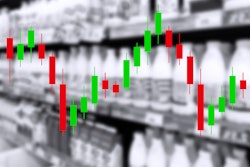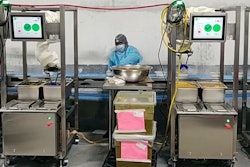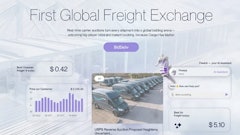
For U.S. consumers, Halloween wasn’t all tricks and treats this year. American families who passed out chocolate candy undoubtedly felt the financial impact of global cocoa bean shortages across the consumer packaged goods (CPG) landscape. To date, the CPG production cost of chocolate and confectionary manufacturing from cocoa has increased by 88% year-over-year (YoY) amidst climate volatility in West Africa, which accounts for around 70% of the world’s cocoa production. The higher costs have been passed off to consumers, with chocolate candy prices climbing by 7.5% and expected to remain elevated throughout 2025.
The cocoa situation is a microcosm of broader commodity-driven inflationary pressures confronting the CPG industry. From the oils and sweeteners in packaged foods to the chemical ingredients in personal care products, CPG manufacturers (CPGs) are grappling with a wave of cost increases that threaten to squeeze margins and test pricing strategies. Recent McKinsey forecasts estimate that commodity prices will remain 20-40% above 2019 levels through at least 2025. In addition, the recent results of the 2024 U.S. presidential election could compound the issue if new tariffs are imposed.
Offsetting commodity price challenges by passing the buck onto consumers isn’t a viable long-term business strategy. In Nielsen IQ’s Mid-Year Consumer Outlook: Guide to 2025, 60% of global consumers said they would buy fewer snacks and confectionary products if prices stay high or climb over the next three months. CPGs in turn need to identify alternative ways to fuel top-line revenue growth and profit at a time when they cannot implement further price hikes without reducing market share. The challenge at hand isn’t necessarily new for them. In their world, only three things in life are certain – death, taxes, and market conditions being in a continual state of volatility. However, the perceived normalcy of that volatility doesn’t make navigating it any less complex.
Advanced technology adoption is critical to weathering the storm. CPGs can overcome commodity shortages in 2025 by utilizing artificial intelligence (AI)-enabled systems of intelligence (SOIs) that strategically inform how to navigate volatility better and faster than industry competitors. SOIs are cross-enterprise optimization and decision-making systems that fuse human-like reasoning and generative AI with transparent glass-box machine learning and non-linear optimization to perform scenario-based predictive modeling relative to the degree of probability that specific disruptions will occur. The insights derived from this modeling serve as a foundational knowledge base for mitigating commodity risk via diversified supply sourcing, product portfolio optimization, and price-driven demand shaping. By pulling those three alchemy levers in unison, CPGs can make measurable strides to reduce commodity risk exposure while increasing profit and capturing expanded market share.
Diversifying supply sourcing
AI-enabled SOIs fundamentally transform how CPGs approach supply diversification. Rather than relying on rudimentary statistical models that merely analyze historical pricing data and supplier performance metrics, SOIs leverage machine learning algorithms to continuously evaluate thousands of variables that impact commodity availability and pricing. They drive enterprise resiliency and can monitor everything from regional weather patterns and geopolitical developments to port congestion levels and currency fluctuations across potential sourcing locations. The resulting insights enable CPGs to build truly resilient, multi-node supply networks that can rapidly flex when disruptions occur.
Consider how this plays out in practice: When early warning indicators suggest an impending shortage from a primary supplier, the SOI automatically initiates contingency sourcing protocols, identifying qualified alternate suppliers based on their ability to meet volume requirements, quality standards, and cost targets. The system then generates specific recommendations for rebalancing procurement across the supplier network to maintain continuity of supply while optimizing costs. This capability proves particularly valuable for ingredients and materials where regional environmental conditions create natural supply constraints, as with cocoa's heavy reliance on West African growing regions.
Beyond reactive measures, SOIs are also capable of supporting proactive supply diversification by analyzing emerging agricultural innovations, synthetic alternatives, and novel ingredient combinations that could reduce dependency on volatile commodities. The systems can model the operational and financial implications of incorporating these alternatives, accounting for factors like reformulation costs, consumer acceptance, and regulatory requirements. This forward-looking capability helps CPGs stay ahead of commodity challenges rather than simply responding to them.
Optimizing product portfolios
While diversified sourcing provides supply-side resilience, AI-driven portfolio optimization addresses commodity risk from the demand side. SOIs analyze vast datasets spanning product margins, commodity usage, consumer preferences, and market dynamics to identify opportunities for portfolio evolution that reduces exposure to volatile materials while maintaining revenue growth. This analysis goes far beyond simple SKU rationalization to encompass strategic decisions about product architecture, formulation, and innovation.
The systems employ advanced scenario modeling to evaluate how different portfolio configurations might perform under various commodity price scenarios. For products heavily dependent on at-risk commodities, the SOI can recommend reformulation strategies that maintain key product attributes while reducing reliance on volatile ingredients. The actionable recommendations consider not just ingredient costs, but also manufacturing implications, brand equity impact, and projected consumer response.
SOIs also identify opportunities to introduce new products specifically designed around more stable commodity inputs. By analyzing consumer sentiment data, purchase patterns, and demographic trends, the systems can predict which alternative formulations are most likely to resonate with target customers. This allows CPGs to proactively shift their portfolio mix toward products with more favorable commodity exposure profiles while still meeting evolving consumer demands.
Driving scenario-based demand shaping
The third critical lever for managing commodity risk lies in strategically influencing demand patterns. AI-enabled SOIs excel at identifying opportunities to shape consumer demand toward products with more favorable commodity profiles without sacrificing market share or brand equity. It goes beyond simple price adjustments to encompass sophisticated demand-shaping strategies informed by deep consumer behavior analysis.
SOIs analyze historical sales data, promotional response rates, cross-product purchase correlations, and consumer sentiment indicators to model how different demand-shaping tactics might influence product mix. This analysis reveals opportunities to strategically promote and position products with lower commodity risk exposure in ways that resonate with target consumers. For instance, during periods of elevated cocoa prices, confectionery manufacturers might leverage SOI insights to make changes to price-pack and product assortment plans and/or emphasize non-chocolate offerings through targeted marketing and promotional activities.
SOIs can also optimize these demand-shaping strategies in real-time based on changing market conditions. The systems continuously factor commodity prices, inventory levels, and consumer response patterns to recommend tactical adjustments that maximize effectiveness. This dynamic capability ensures that demand-shaping efforts remain aligned with both business objectives and market realities. When combined with portfolio optimization and supply diversification, strategic demand shaping rounds out a powerful framework for managing commodity risk while maintaining profitable growth.
Amid volatile commodity markets, CPGs that leverage AI-based prescriptive and anticipatory modeling, system generated scenarios, and automated decisioning to simultaneously optimize supply sourcing, portfolio composition, and demand patterns will be best positioned to navigate uncertainty. By embracing SOI technologies now, forward-thinking manufacturers can transform commodity volatility from a persistent threat into a source of competitive advantage that drives sustainable growth in 2025.







![2024 Top Software Color[vertical]](https://img.foodlogistics.com/files/base/acbm/scn/image/2024/10/2024_Top_Software___color_vertical_.6705637b3b03c.png?auto=format%2Ccompress&bg=fff&fill-color=fff&fit=fill&h=167&q=70&w=250)









